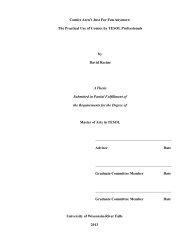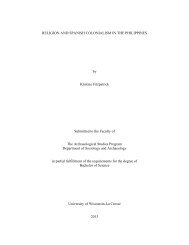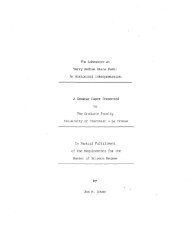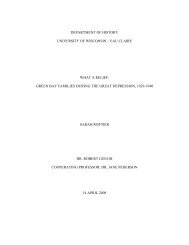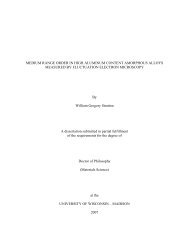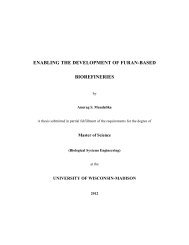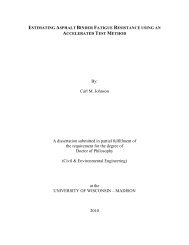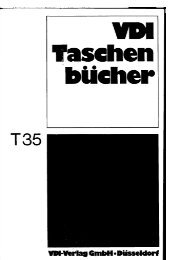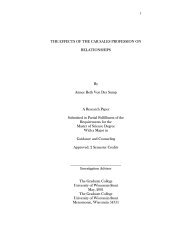The effectiveness of eye movement desensitization and reprocessing
The effectiveness of eye movement desensitization and reprocessing
The effectiveness of eye movement desensitization and reprocessing
You also want an ePaper? Increase the reach of your titles
YUMPU automatically turns print PDFs into web optimized ePapers that Google loves.
Eye Movement 24<br />
issue must be addressed if anything more than a small treatment effect can be expected by the<br />
researcher (Shapiro, 1995).<br />
Summary, Conclusions, <strong>and</strong> Recommendations<br />
<strong>The</strong> following section provides a summary <strong>of</strong> the research, conclusions, <strong>and</strong> recommendations<br />
for clinicians.<br />
Summary<br />
Most <strong>of</strong> the studies resulted in clinically positive results with regard to the <strong>effectiveness</strong><br />
<strong>of</strong> EMDR. Some published research on EMDR has not conformed to the way the method is used<br />
in clinical practice. Researchers untrained in the method <strong>and</strong> using only a restricted number <strong>of</strong><br />
directed <strong>eye</strong> <strong>movement</strong>s nevertheless drew conclusions about the entire method (S<strong>and</strong>erson <strong>and</strong><br />
Carpenter, 1992; Tallis <strong>and</strong> Smith, 1994). Neither <strong>of</strong> these studies was viewed seriously due to<br />
this inadequacy, <strong>and</strong> both <strong>of</strong> these studies found effects that were essentially equivalent to simple<br />
exposure. While these studies may allow for conjectures about the <strong>effectiveness</strong> <strong>of</strong> isolated <strong>and</strong><br />
restricted <strong>eye</strong> <strong>movement</strong>s, the results shed no light on the use <strong>of</strong> the overall EMDR method<br />
(Shapiro, 1995).<br />
EMDR is a complex methodology that entails much more than directed <strong>eye</strong> <strong>movement</strong>.<br />
Some clients do not respond to certain <strong>eye</strong> directions or speeds, <strong>and</strong> others require that the <strong>eye</strong><br />
<strong>movement</strong>s be systematically altered during the course <strong>of</strong> therapy in order to maximize treatment<br />
effects. Untrained researchers who used four to seven sets <strong>of</strong> <strong>eye</strong> <strong>movement</strong>s that are restricted<br />
to the same direction, rate, <strong>and</strong> number report only marginal improvement in their subjects. This<br />
is unfortunate in that the S<strong>and</strong>erson <strong>and</strong> Carpenter (1992) study <strong>of</strong> phobic clients, for example,<br />
reported a decrease <strong>of</strong> distress equivalent to only two SUD Scale units after seven sets <strong>of</strong>



